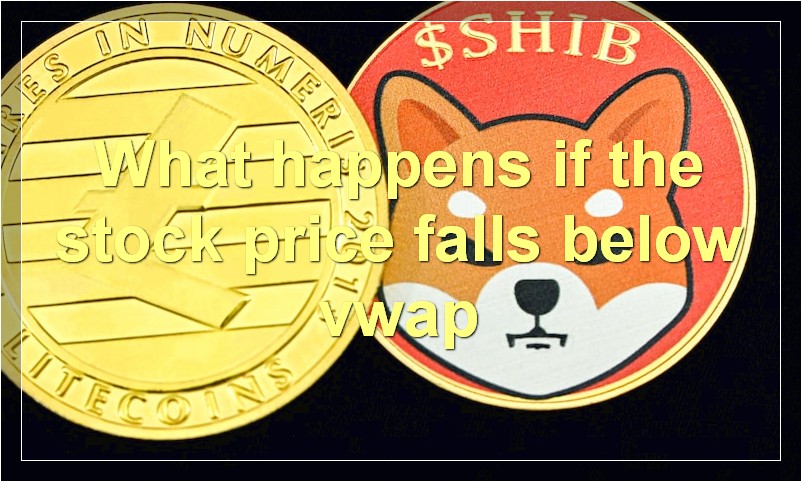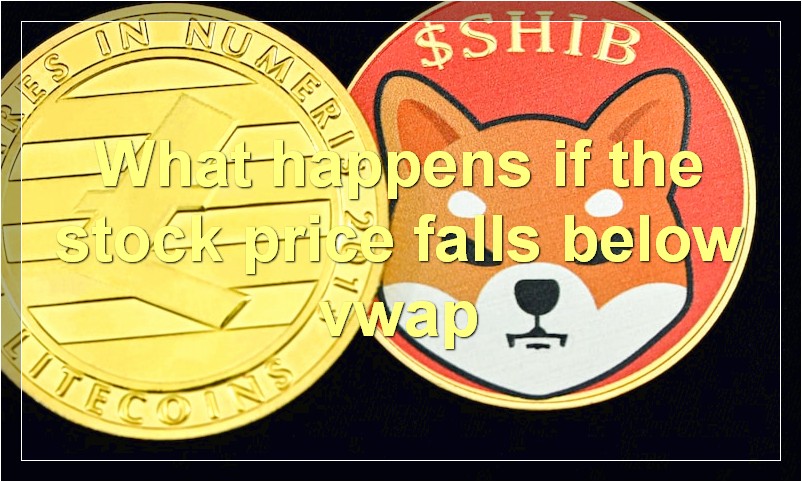If you’re an active trader, then it’s important to understand VWAP – how it’s calculated and used.
What is the vwap in stocks
If you’re new to the stock market, you may have come across the term “VWAP” and wondered what it meant. VWAP is short for volume-weighted average price, and it’s a trading metric that can be used to measure the average price of a security over a given period of time. In this article, we’ll take a closer look at what VWAP is, how it’s calculated, and how traders can use it to make better-informed trading decisions.
So, what exactly is VWAP? As its name suggests, VWAP is an average price that takes into account the security’s volume. That is, it not only looks at the price of a security at each transaction, but also considers how many shares were traded. This makes VWAP a more accurate measure of the security’s true value than simply looking at its average price.
To calculate VWAP, you first need to determine the total value of all transactions during the period in question. This is done by multiplying the number of shares traded in each transaction by the price of the security. Once you have the total value, you can divide it by the total number of shares traded to get the VWAP.
While VWAP can be calculated for any time period, it’s most commonly used on intraday charts. That’s because intraday VWAP can provide traders with valuable information about a security’s price action and where it might be headed next.
There are a few different ways that traders can use VWAP. First, some traders use VWAP as a trend-following indicator. That is, they’ll buy or sell a security when it moves above or below its VWAP. Second, traders may use VWAP as a support or resistance level. That is, they’ll buy or sell a security when it tests VWAP after moving higher or lower. Finally, some traders use VWAP as an entry or exit point. That is, they’ll enter or exit a position when the security’s price reaches VWAP.
While there’s no one right way to use VWAP, it can be a helpful tool for making better-informed trading decisions. If you’re new to trading, be sure to do your own research and practice with a demo account before putting real money on the line.
How is vwap calculated

The volume-weighted average price (VWAP) is a trading benchmark used by traders that gives the average price a security has traded at throughout the day, based on both volume and price. To calculate VWAP, all trading periods throughout the day are added together and the total is then divided by the number of periods. The result is the volume-weighted average price.
Some traders use VWAP as a trading strategy because it can help them make better decisions when buying or selling securities. For example, if a trader wants to buy a stock but doesn’t want to pay more than the VWAP, he or she can place a limit order at the VWAP. This ensures that the trader won’t pay more for the stock than what’s considered fair, based on how much it has traded for during the day.
What are the benefits of using vwap
Some benefits of using the VWAP algorithm when trading stocks include more predictable prices, reduced transaction costs, and improved execution. VWAP is calculated by taking the volume-weighted average price of a security over a given period, making it a good indicator of where the stock is likely to trade during that period. Many traders use VWAP as a benchmark, buying when the stock price falls below VWAP and selling when it rises above.
VWAP can provide some advantages over other common indicators such as moving averages. For example, because VWAP uses volume data as well as price data, it can help to identify periods of heavy buying or selling pressure which may not be apparent from the price alone. Additionally, VWAP is less likely to be impacted by short-term price fluctuations than indicators such as moving averages.
While VWAP can be a useful tool for traders, it is important to remember that it is just one indicator among many and should not be relied on exclusively. As with any trading strategy, it is important to test out different methods and find what works best for you.
How can vwap be used to trade stocks
VWAP is the volume weighted average price of a security over a particular time period.
It is a measure of the average price at which a security is traded over the course of a day.
VWAP is used as a benchmark by many institutions and traders.
There are a few different ways to trade using VWAP.
One way is to buy when the stock price falls below the VWAP, and sell when it rises above the VWAP.
Another way is to use the VWAP as a target to take profits or cut losses.
VWAP can be used as a guide to help make trading decisions, but it is not foolproof.
The market is constantly changing and VWAP may not always reflect the true value of a security.
Traders should always do their own research and use multiple indicators before making any trades.
What are the risks associated with trading stocks using vwap
When trading stocks using vwap, there are a few risks to be aware of. First, because vwap is a lagging indicator, it may not provide the most accurate picture of current market conditions. This can lead to trades being executed at less than ideal prices. Second, vwap can be subject to significant amounts of slippage during periods of high market volatility. This can eat into profits, or even lead to losses. Finally, because vwap is calculated using volume-weighted data, it may be less reliable during times when trading volume is low.
What happens if the stock price falls below vwap

If the stock price falls below the volume weighted average price (VWAP), it may indicate that the stock is oversold and could be due for a rebound. VWAP is a popular technical indicator that is used by day traders and short-term investors to determine the best time to buy or sell a stock.
Is there a limit to how much vwap can move in a day
Yes, there is definitely a limit to how much vwap can move in a day. This is because vwap is simply the average price of a security over a specific period of time, typically one day. So, if there are drastic changes in the price of a security throughout the day, this will be reflected in the vwap. However, at the end of the day, the vwap will only be as high or low as the average price of the security was during that day.
What happens when vwap crosses above the moving average
When vwap crosses above the moving average, it signals that the market is becoming bullish and that prices are likely to continue to rise. This crossover is often used by traders as a buy signal.
Can vwap be used to trade options
Option trading is a complex financial undertaking that requires a high degree of sophistication and knowledge. As such, the use of technical indicators like VWAP can be extremely helpful in making informed decisions about when to buy or sell options.
VWAP, or volume-weighted average price, is a technical indicator that takes into account the volume of trading activity when calculating the average price of a security. This is important because it gives traders a more accurate picture of the true underlying value of a security, as opposed to simply looking at the average price.
When applied to options trading, VWAP can be used as a tool to help determine whether an option is currently undervalued or overvalued. If the VWAP is below the current market price, it may be an indication that the option is undervalued and therefore a good candidate for purchase. Conversely, if the VWAP is above the current market price, it may be an indication that the option is overvalued and therefore a good candidate for selling.
Of course, VWAP is just one technical indicator and should not be used in isolation when making trading decisions. However, when combined with other factors, it can be a valuable tool in helping to identify potential trading opportunities in the options market.
What other indicators can be used in conjunction with vwap
There are a few other indicators that can be used in conjunction with vwap. Some technical analysts use vwap along with Bollinger Bands®. Others use vwap in combination with momentum indicators, such as the Relative Strength Index (RSI) or the Stochastic Oscillator.

